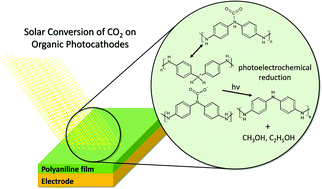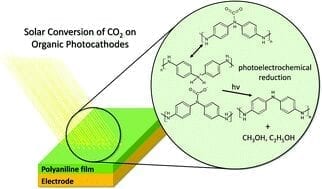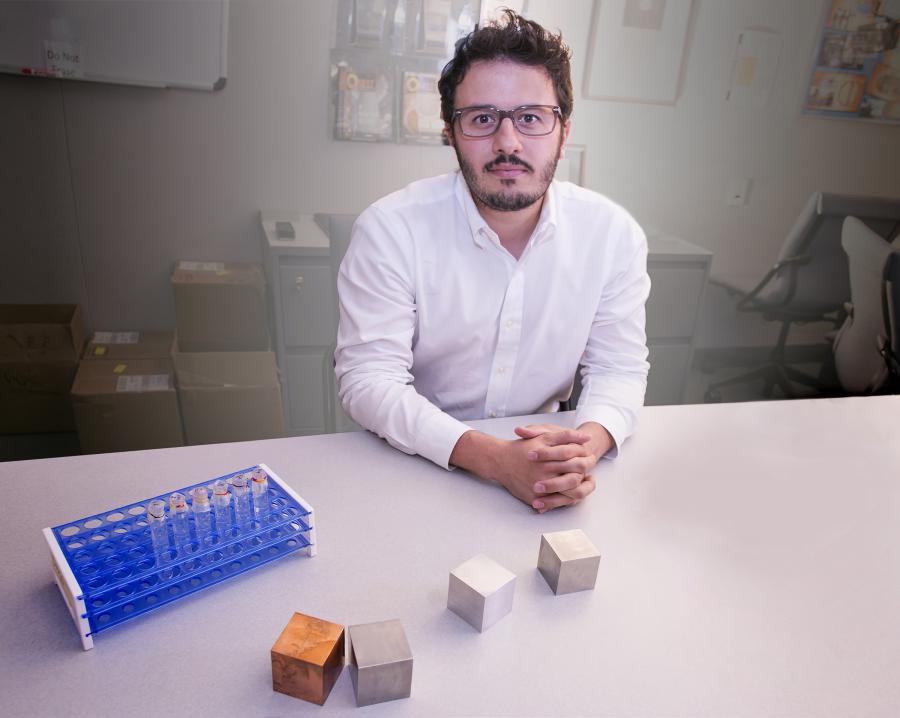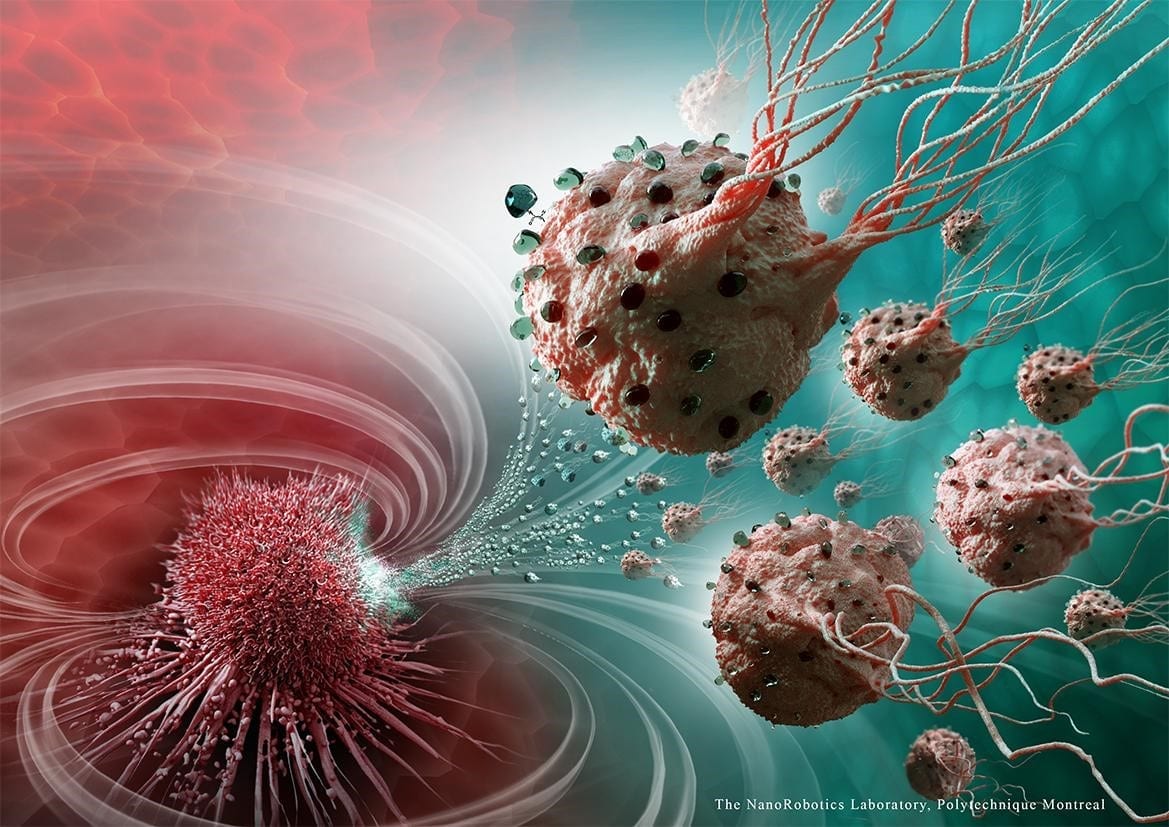
Chemists at The University of Texas at Arlington have been the first to demonstrate that an organic semiconductor polymer called polyaniline is a promising photocathode material for the conversion of carbon dioxide into alcohol fuels without the need for a co-catalyst.
“This opens up a new field of research into new applications for inexpensive, readily available organic semiconducting polymers within solar fuel cells,” said principal researcher Krishnan Rajeshwar, UTA distinguished professor of chemistry and biochemistry and co-Director of UTA’s Center for Renewable Energy, Science & Technology.
“These organic semiconducting polymers also demonstrate several technical advantages, including that they do not need a co-catalyst to sustain the conversion to alcohol products and the conversion can take place at lower temperatures and use less energy, which would further reduce costs,” Rajeshwar added.
Rajeshwar and his co-author Csaba Janaky, professor in the Department of Physical Chemistry and Materials Science at the University of Szeged, recently published their findings in The Royal Society of Chemistry journal ChemComm as
“Polyaniline films photoelectrochemically reduce CO2 to alcohols.”
In this proof-of-concept study, the researchers provide insights into the unique behavior of polyaniline obtained from photoelectrochemical measurements and adsorption studies, together with spectroscopic data. They also compared the behavior of several conducting polymers.
The stationary currents recorded after two hours during testing suggests that the polyaniline layer maintained its photoelectrochemical efficacy for the studied time period. While in the gas phase, only hydrogen was detected, but potential fuels such as methanol and ethanol were both detected in the solution for carbon dioxide-saturated samples.
“Apart from these technical qualities, as a polymer, polyaniline can also be easily made into fabrics and films that adapt to roofs or curved surfaces to create the large surface areas needed for photoelectrochemical reduction, eliminating the need for expensive and dangerous solar concentrators,“ Rajeshwar added.
Frederick MacDonnell, chair of UTA’s Department of Chemistry and Biochemistry, underlined the importance of this research in the context of UTA’s focus on global environmental impact within the Strategic Plan 2020: Bold Solutions|Global Impact.
“Dr. Rajeshwar’s ongoing leadership in research around new materials for solar fuel generation is vital in a world where we all recognize the need to reduce the impact of carbon dioxide emissions,” MacDonnell said. “Finding an inexpensive, readily-available photocathode material could open up new options to create cheaper, more energy-effective solar fuel cells.”
The Latest on: Solar fuel cell
[google_news title=”” keyword=”Solar fuel cell” num_posts=”10″ blurb_length=”0″ show_thumb=”left”]
via Google News
The Latest on: Solar fuel cell
- Can Colorado get back on top in solar?on April 26, 2024 at 8:10 am
Plus: A triathlete fights for clinical trial access, a residency that actually pays artists, “food freedom” bill won’t pass this session and more ...
- What’s that?…A fuel cell that harvests energy from…dirt?on April 26, 2024 at 7:10 am
A soil microbial fuel cell where microbes in dirt could power applications which are literally “in the field”.
- LaFeO3 Perovskite Fuel Cell Technology Boosts SRMAP's Clean Energy Missionon April 26, 2024 at 6:45 am
The significance of this invention cannot be understated in an era where the reliance on clean and efficient energy conversion methods is paramount ...
- Revolutionizing Clean Energy: SRMAP’s Breakthrough in Fuel Cell Technology with LaFeO3 Perovskiteon April 25, 2024 at 11:47 pm
In the quest for sustainable energy solutions to meet the soaring global energy demands, an innovative breakthrough has emerged from the laboratories of SRM University-AP, situated in the picturesque ...
- Breakthrough in Organic Solar Cells Paves Way for Wearable Solar Poweron April 25, 2024 at 5:00 pm
An international group of scientists from the University of Hong Kong (HKU) has developed a new method to improve the efficiency and stability of organic solar cells, paving the way for integrating ...
- The Myths And Truths About Why Electric Cars Don't Have Solar Panelson April 25, 2024 at 7:00 am
Although solar energy alone cannot fully power a car for real-world usage, manufacturers are overcoming challenges and getting closer by the hour.
- A second solar project takes off at JFK airporton April 24, 2024 at 9:27 am
TotalEnergies began construction of an onsite solar-plus-storage system, providing energy to Port Authority and Con Edison, as well as community solar for area residents.
- Former Amazon Prime Air employees raise $4.5M for stealthy solar airplane startupon April 24, 2024 at 8:37 am
Seattle-based Radical says it has raised $4.5 million to build solar-powered, autonomous planes that can beam down connectivity and imagery.
- Scientists unveil self-cleaning solar panel technology poised to revolutionize energy sector: 'A major step'on April 22, 2024 at 3:30 am
This is the type of technological advancement that we can hope and expect to see more of as solar and wind continue to become more widespread. Scientists unveil self-cleaning solar panel technology ...
via Bing News











